On September 3rd, Beijing’s Tiananmen Square once again became the world’s eye-popping focus. A grand military parade commemorating the 80th anniversary of China’s victory in the War of Resistance Against Japanese Aggression and the World Anti-Fascist War (World War II) was held there. This was China’s first large-scale military parade in six years and the second commemorating the victory of the War of Resistance Against Japanese Aggression, following the 2015 event.
The majestic troops, sophisticated equipment and meticulous marching demonstrated the tremendous progress China’s military has made in recent years. From the founding of the People’s Republic of China (PRC) in 1949 to 2025, China has held 20 large-scale military parades, the most numerous of which were themed around National Day.
China’s strategic missile showcase
The global focus of this military parade was primarily on the various weaponry on display. For example, the DF-41 intercontinental ballistic missile — a solid-fuel missile — boasts a 1.6-ton warhead. There’s also the rumored DF-5C ballistic missile, which uses liquid fuel and is therefore with a higher level of stability.
Liquid fuel’s high momentum allows it to carry a much heavier warhead than solid-fuel missiles. As a result, the DF-5C’s warhead can weigh up to 7 tons and can carry 10 independently targetable nuclear bombs, posing a significant threat to defense systems worldwide.
Furthermore, its range has been significantly increased. Some Chinese military bloggers estimate the DF-5C’s range to reach 25,000 kilometers, meaning it could strike any target worldwide from China. Additionally, its accuracy has been significantly improved compared to its predecessor, the DF-5B, with an estimated deviation of less than 500 meters. Therefore, in the event of a future nuclear war, the DF-5C would almost certainly become a powerful weapon for China’s second-stage nuclear retaliation.
The surprise debut of the DF-61
Meanwhile, what drew even more attention was the “upside surprise” — the DF-61. Its detailed technical specifications remain unknown to the world. However, its unannounced appearance foreshadowed several key points. First, before the parade, global media and military enthusiasts mainly focused their discussions on the potential appearance of a modified version of the DF-41 and the DF-51.
However, the DF-61 suddenly made its debut, skipping over the DF-41 and DF-51. As a previously unforeseen new model, this undoubtedly signals a significant shift in the naming and sequence evolution rules for China’s strategic missiles. Second, based on these changes, it can be inferred that the range and targets of China’s strategic missiles have also undergone significant adjustments.
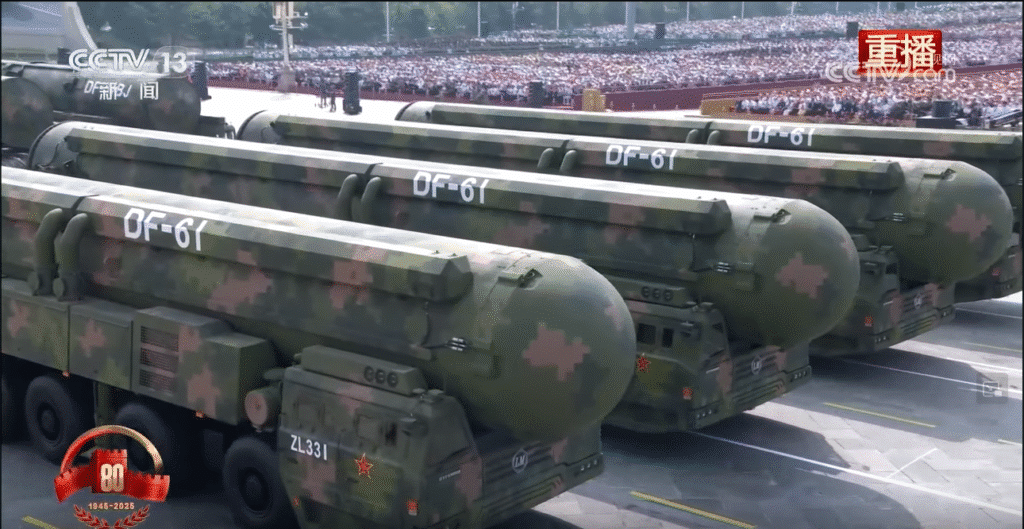
Hypersonic weapons and the four-in-one system
Moreover, the parade also demonstrated that China has already established a comprehensive hypersonic missile system. Various hypersonic missiles, including the YJ-15, YJ-17, YJ-19 and YJ-21, were unveiled, ranging from 400 to 2,000 kilometers.
The YJ-21 hypersonic anti-ship missile, in particular, has even been dubbed as “US-exclusive” by Chinese military enthusiasts. It is 7.5 meters long, 70 centimeters in diameter, and has an 800-kilogram warhead. It boasts a range of 2,000 kilometers and a glide speed of Mach 6 to 7 in the intermediate phase. It is capable of maneuvering, changing trajectory and performing complex maneuvers such as the “Qian Xuesen ballistic trajectory” and the “sea skimming maneuver”. Combined with satellite and radar/infrared guidance technology, its terminal attack speed can exceed Mach 10, though the exact speed is currently unknown.
A single YJ-21 missile costs roughly $20 million, yet it can destroy an aircraft carrier valued at $13 billion. Even at a terminal speed of only Mach 10, it can penetrate steel plates up to three meters thick. In a simulated attack test by the Chinese military, a YJ-21 sank a decommissioned cargo ship.
The JL-3 is another new submarine-launched missile that has been highly classified but has attracted great attention from governments and military enthusiasts around the world. It is said to have a launch range of up to 12,000 kilometers.
Implications for Taiwan and the US
Judging from the missiles displayed by China, it appears that China has already established a comprehensive missile system, including road-launched (DF series), air-launched (PL series), ship-launched (YJ series) and submarine-launched (JL series) systems, with most of them capable of being loaded with nuclear warheads. The consequence of this four-in-one strategic nuclear strike capability is that it will make it more difficult for other countries to detect the source of the missile in the future.
Judging from the performance of these weapons, approximately 75% of them should be aimed at the United States, while the remaining 25% should be targeted at the First Island Chain. Therefore, for Taiwan, situated at the most crucial point of the First Island Chain, this parade clearly does not bring good news.
Not only is it located in a strategically important location that China is determined to capture, but many of the weapons in the parade appear to have been designed explicitly for Taiwan as well. These include weapons such as the PHL-16 rocket launcher, which has a range of 400 kilometers, capable of covering nearly the entire island of Taiwan, as well as various latest amphibious landing combat equipment.
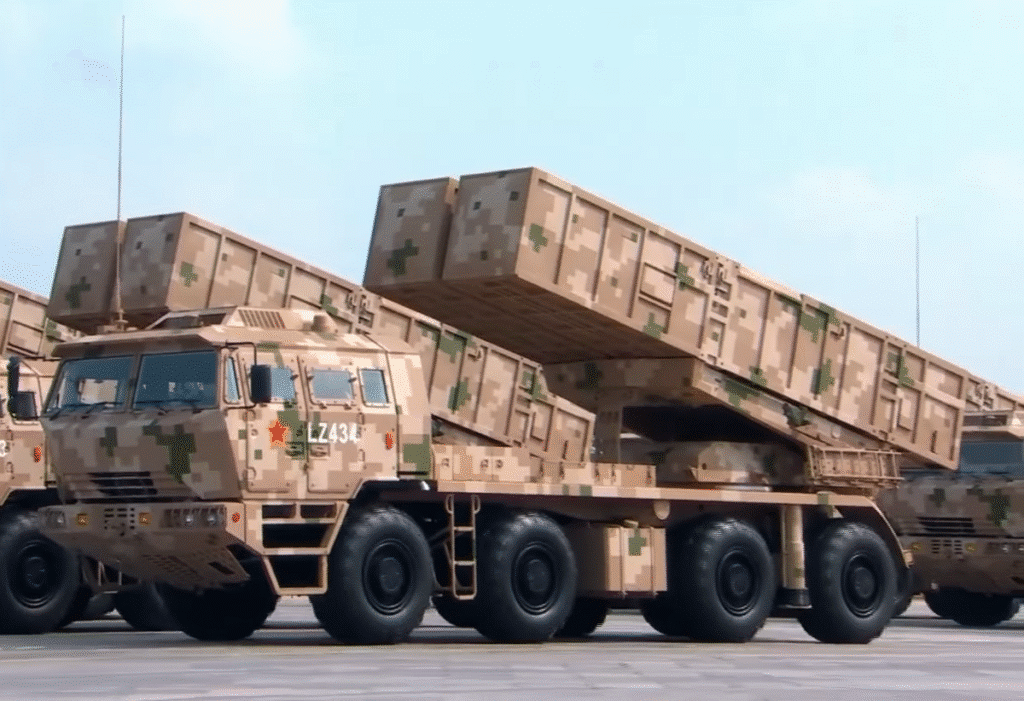
Overall, China’s September 3rd military parade will have a significant, even fundamental impact on the future balance of power and geopolitical relations in the Indo-Pacific region. In particular, the parade showcased the most devastating trends in weapons development that could impact the future global strategic balance: automation and AI technology.
China mainly showcased three separate formations of unmanned weapons and equipment, including many unprecedented devices such as robotic dogs, unmanned vessels, various types of drones, and laser and microwave counterdrone systems. Perhaps the most notable of these were the two 20-meter-long unmanned underwater vehicles (UUVs) — the HSU-100 and AJX-002. These are two other pieces of advanced equipment that have never been disclosed and are generally believed to be specifically aimed at the United States, particularly for their strategic nuclear submarines and aircraft carriers.
Given China’s consistent low-cost manufacturing advantages, in the future, US strategic nuclear submarines and aircraft carriers could face pursuit, interception and suicide attacks in the vast Pacific waters from dozens or even hundreds of Chinese UUVs — the so-called “wolf pack” tactic. If this truly happens, it would undoubtedly force the US to make significant adjustments to its future combat tactics and even strategy.
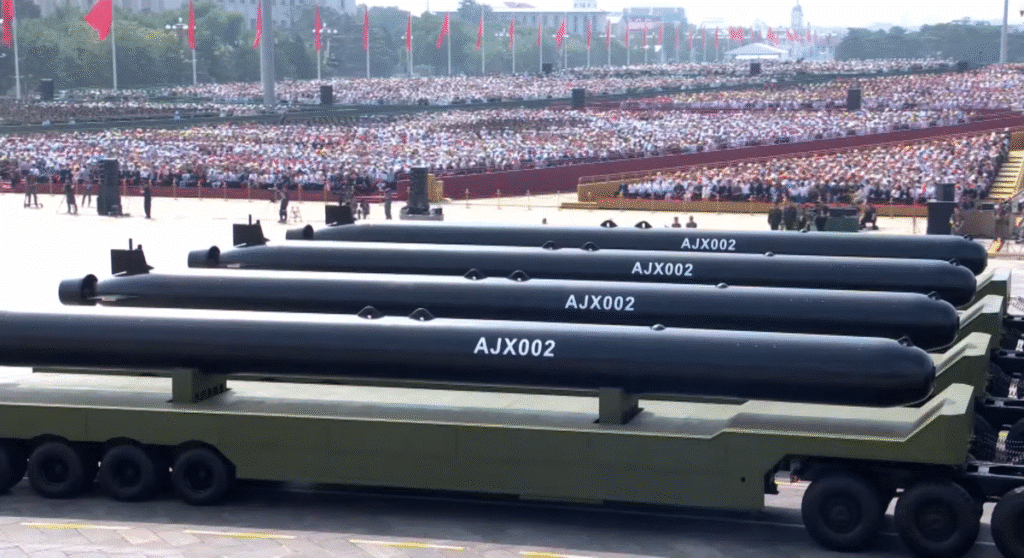
Specifically, this parade framed the situation that will likely force the US to make vital strategic adjustments and structural rebalancing in the Pacific region, including its approach to Taiwan. Simply put, the First Island Chain will no longer be a place where the US can freely enter and exit. Forced to do so, the US may choose to adopt a strategic distance, given the threat posed by China’s various hypersonic missiles to its aircraft carriers, since the potential costs are simply too high to bear.
US submarines attempting to enter the First Island Chain will also be subject to saturation attacks from China’s low-cost but numerous UUVs. Thus, if the US cannot devise a countermeasure, it will have no choice but to withdraw. In reality, the US military bases in Okinawa, Japan — which are very close to China — are already gradually reducing their presence, a clear example of this. Gradually, the US concept of “assisting Taiwan” will become a strategy that must be abandoned.
In this context, for Taiwan, the sense of urgency is even greater than for the US. As mentioned above, Taiwan is directly on the front lines facing mainland China, with a distance of only 130 kilometers. Therefore, this parade also serves as a wake-up call and a paramount concern for the Taiwanese authorities: Taiwan urgently needs to change its approach to combating mainland China.
Taiwanese soldiers will no longer face hand-to-hand combat and urban warfare, but rather the People’s Liberation Army’s (PLA) various unmanned landing military equipment, such as robot dogs, drones and unmanned tanks. Perhaps in the future, before mainland China completely conquers Taiwan, many Taiwanese soldiers might never have even seen a single PLA soldier on the battlefield.
Yet in a shifting geopolitical landscape marked by China’s parade, the first joint appearance of the leaders of China, Russia and North Korea is undoubtedly even more epoch-making than those weapons. It is definitely signaling the emergence of a group challenging the existing international order.
Interestingly, this is also thanks to US President Donald Trump. His policies, including the weaponization of trade and tariffs, have pushed China, Russia, India, North Korea, Iran and so many others into a common camp, but have also triggered a wide swath of allies to distance themselves from the US.
After the parade, China, Russia and North Korea are very likely to use this opportunity to establish a regional security coordination mechanism, further consolidating their respective regional influence. On the contrary, Japan and South Korea will ultimately bear the brunt of this impact.
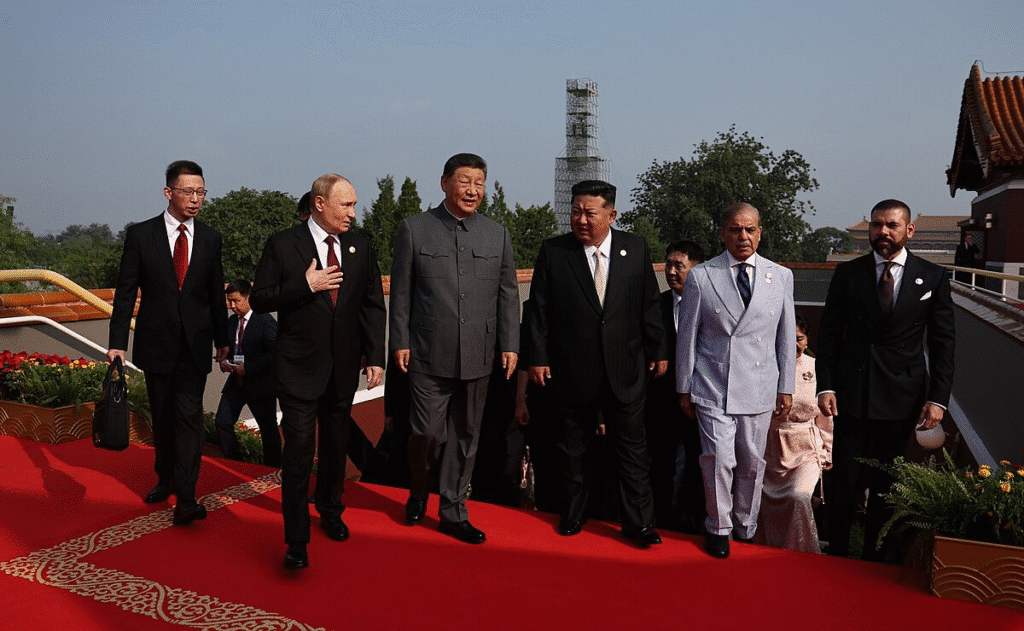
Xi Jinping’s political calculations and limits of force
From China’s political system perspective, President Xi Jinping’s current term will end at the 21st National Congress of the Chinese Communist Party (CCP) in 2027. Traditionally, the Fourth Plenary Session of the 20th National Congress of the CCP, to be held in October of this year, will discuss the issues of leadership succession. At this somewhat delicate juncture, Xi’s invitation to over 20 heads of state from around the world to put all their efforts into hosting such a grand military parade, in some ways, demonstrates his determination to remain in office after 2027.
Nevertheless, an assessment of China’s military exercises cannot be based on social media outlets. Many Western netizens online criticize China’s weapons as being made of “plastic” and lacking combat experience. These netizens’ primary goal is to attract attention, generate net traffic and ultimately generate revenue for themselves.
A true assessment of China’s military strength should be based on information and reports released by the Pentagon. People should believe that the US military understands whether to worry about these weapons, which may be made of “plastic”.
In addition, the inner stability of China’s political system is also a key factor limiting the ultimate effectiveness of these seemingly lethal weapons. Although Xi’s power within the Communist Party’s centralized system remains unshakeable for now, it’s not as secure as a rock. Over the past two years, many of Xi’s closest associates in the military have been investigated by the Communist Party’s Central Commission for Discipline Inspection, reflecting a highly unusual political trend.
Generally speaking, in China’s political system, so-called “disciplinary investigations” are merely a cover-up. In reality, they are just a political tactic to eliminate dissidents. If corruption and bribery were truly the standard, then at least half of the 100 million Communist Party members would be imprisoned. Therefore, it remains to be seen whether Xi still maintains unquestionable control over the military. Without absolute control over the military, dictators are generally reluctant to wage a war. Failure could mean the rapid collapse of the regime, a risk neither Xi nor the CCP dares to take.
The same is true of the Taiwan issue. From a purely military perspective, it would be easy for mainland China to defeat Taiwan’s military. However, the question is, after conquering Taiwan, how would the CCP govern a place of 30 million people? If, as happened in Hong Kong before, there were a series of mass protests against authoritarianism and for democracy in Taiwan, the CCP would once again become an international laughing stock. This, more than military strength itself, is what the CCP fears most.
Military strength, certainly, is important and necessary. However, from the perspective of human history, the succession of dynasties isn’t solely determined by force. What is more crucial is the will of the people. Looking around the world, from ancient times to the present, in the vast majority of dynasties, has the ruling class not possessed the most advanced weapons of the time? Yet, in the end, weren’t their regimes overthrown by the people?
Force cannot solve all problems. Otherwise, the Soviet Union of yesterday would not have collapsed, and the US would also be invincible today. But how could it be so embarrassed because of a tariff war?
Albert Einstein once said, “Peace cannot be kept by force. It can only be achieved by understanding.” This statement reflects his profound pondering on World War I. That is to say, any country that insists solely on unilateral militarism will inevitably descend into war and violence, and its military power will lie more in parade than in execution. Only through mutual understanding and cooperation can we achieve peace and progress.
[Kaitlyn Diana edited this piece.]
The views expressed in this article are the author’s own and do not necessarily reflect Fair Observer’s editorial policy.
Support Fair Observer
We rely on your support for our independence, diversity and quality.
For more than 10 years, Fair Observer has been free, fair and independent. No billionaire owns us, no advertisers control us. We are a reader-supported nonprofit. Unlike many other publications, we keep our content free for readers regardless of where they live or whether they can afford to pay. We have no paywalls and no ads.
In the post-truth era of fake news, echo chambers and filter bubbles, we publish a plurality of perspectives from around the world. Anyone can publish with us, but everyone goes through a rigorous editorial process. So, you get fact-checked, well-reasoned content instead of noise.
We publish 3,000+ voices from 90+ countries. We also conduct education and training programs
on subjects ranging from digital media and journalism to writing and critical thinking. This
doesn’t come cheap. Servers, editors, trainers and web developers cost
money.
Please consider supporting us on a regular basis as a recurring donor or a
sustaining member.
Will you support FO’s journalism?
We rely on your support for our independence, diversity and quality.



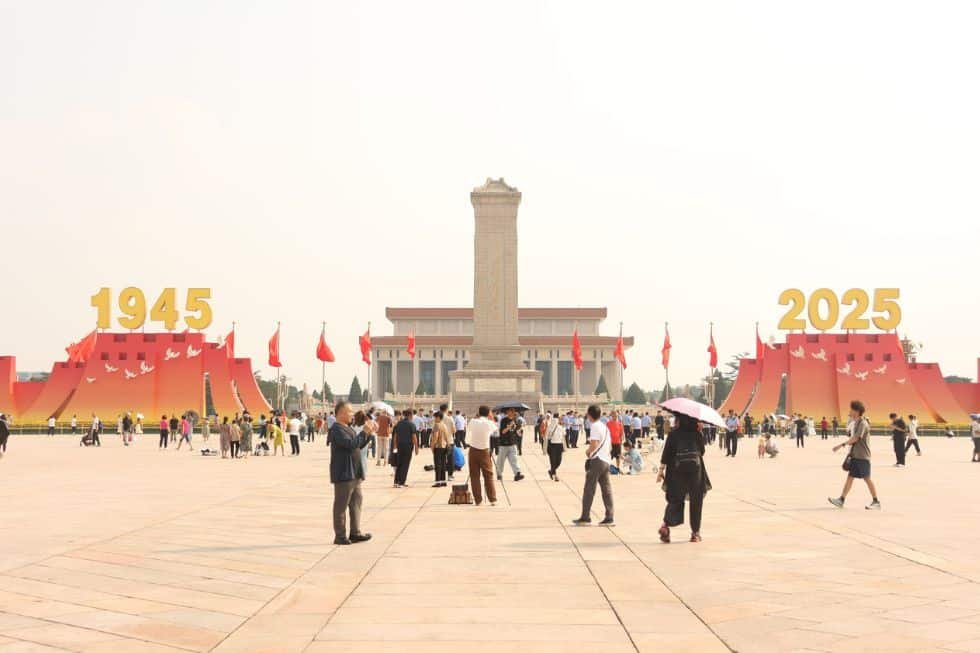
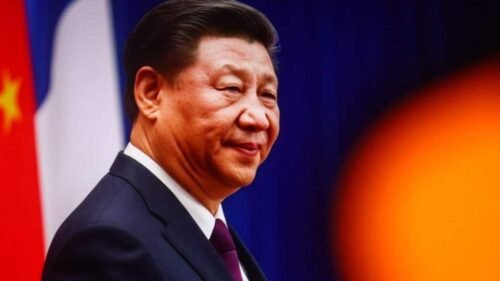
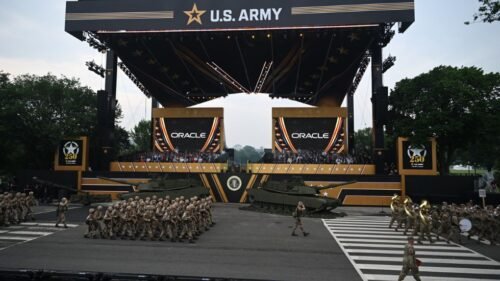
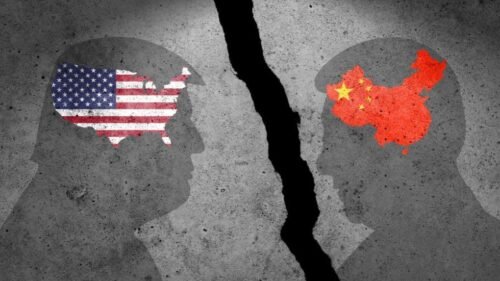
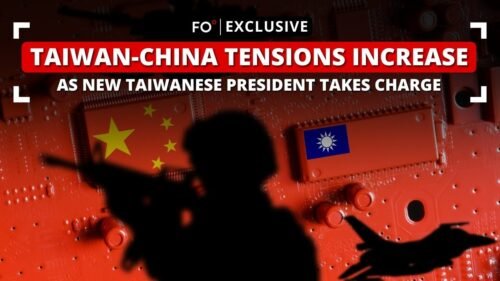


Comment